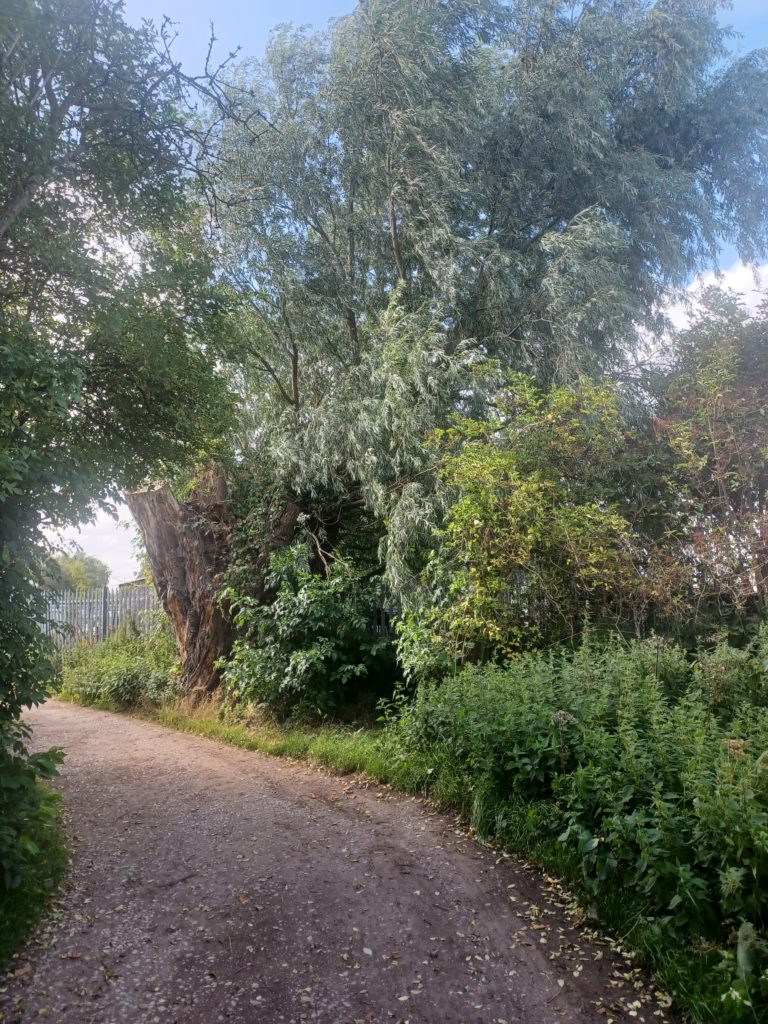
Today’s photo shows a huge white willow tree stump just before the path from the end of Beverley Beck reaches the aquaduct which carries Beverley Beck across Barmston Drain. This must have been a massive specimin before being reduced to its present size. Willows, like horse chestnuts, have quite a short main trunk before the principal branches strike-out. The twisted effect on the bark of this tree is not an uncommon feature of many other trees, for myself, the reasons for this feature are speculative. It looks like the trunk of an ancient tree although willows generally are one of the least long-lived of tree species. This line of thought makes nonsense of some of the ‘ways’ of working out the age of a tree as suggested on the internet.
Beverley is sited on the very edge of the River Hull flood plain, the Beck was dug, probably in the 11th or 12th centuries, across a section of this flood plain and flowing into it were streams with their sources in the lower Wolds edge. Toll Gavel, the pedestrianised main shopping street of Beverley, follows the floor of one such stream, hence its meandering shape. In Barton on Humber Whitecross Street has had the same history, although not pedestrianised. On the west side of Beverley the Wolds topography is evidenced in the undulations of Beverley Westward, although also here are the results of local chalk quarrying.
In a way it could be said that the white willow in the photo has been pollarded, this meaning that the upper branches have been reduced in height. Such work is often seen in urban areas to prevent the mature trees getting too tall and unstable. Willows are/were often coppiced, that is cut back almost to ground level to encourage the plant to set-up new young trees from the root-stock which, if cut down after five or six years, provided flexible rods for wickerwork fencing or wattle and daub walling. Cutting back younger twigs provided material for basket making (see previous notes on the once basket making industry of Barrow on Humber).
The nearby aquaduct (see above) is an interesting structure.
(to be continued).